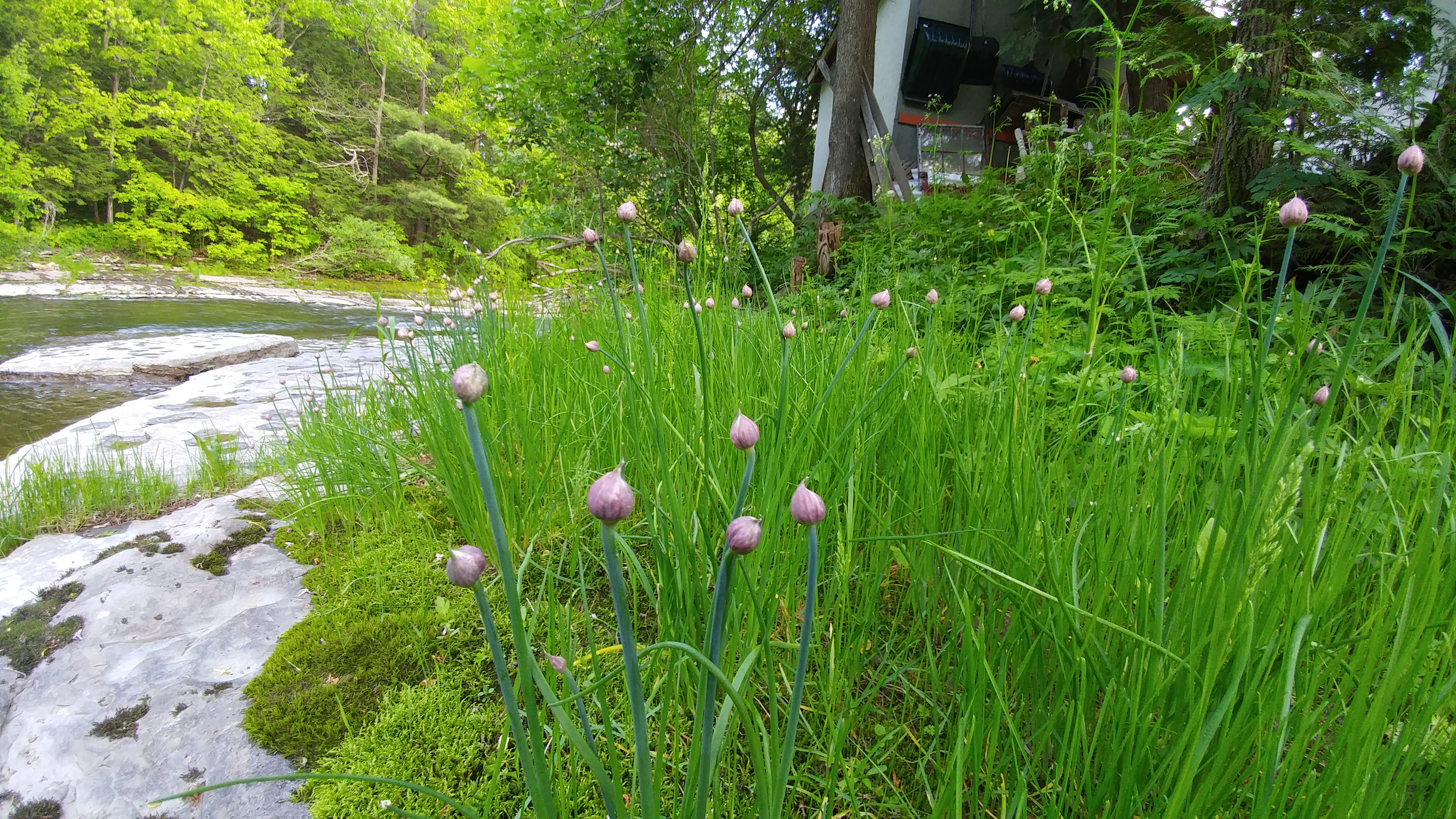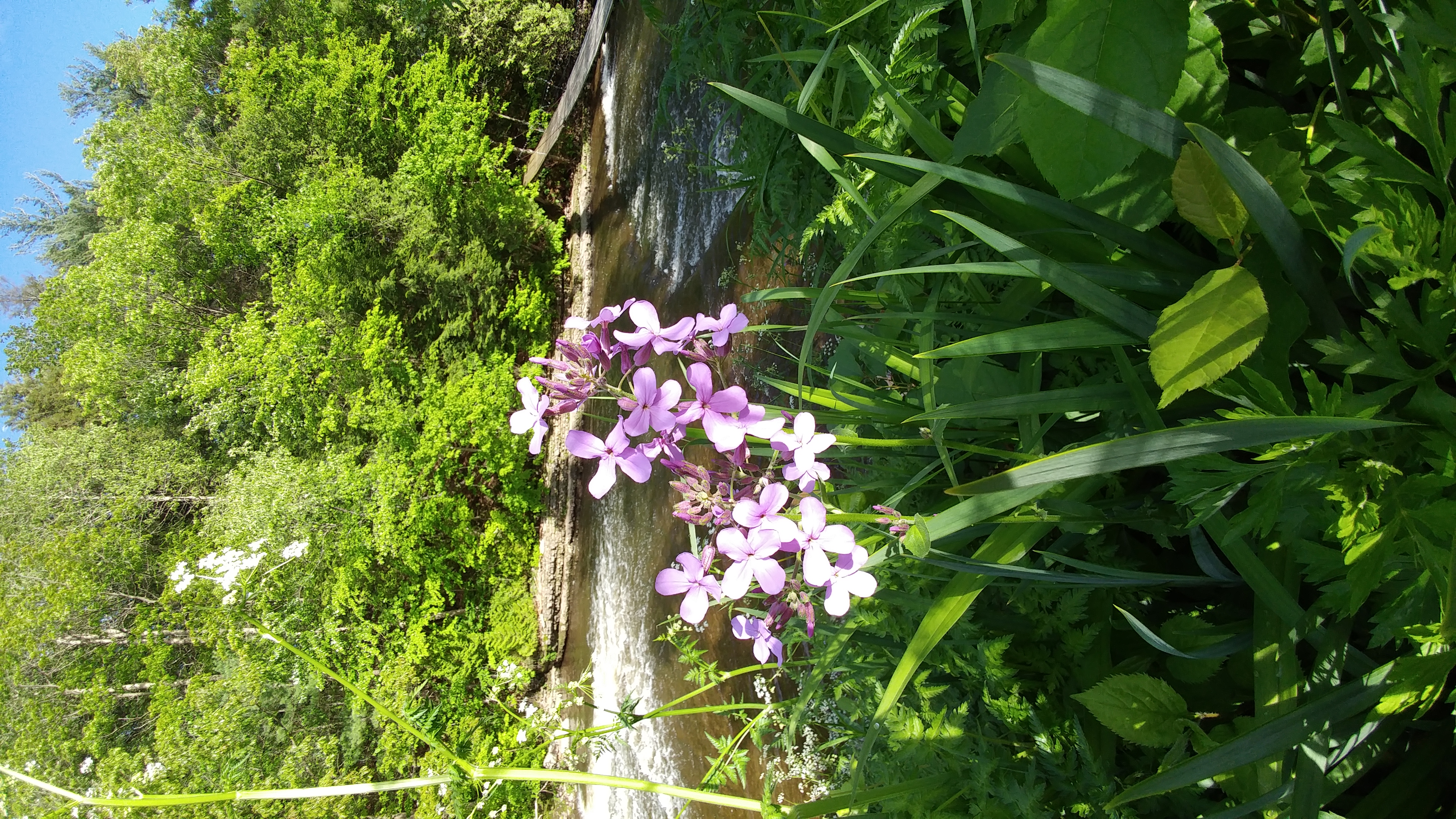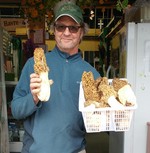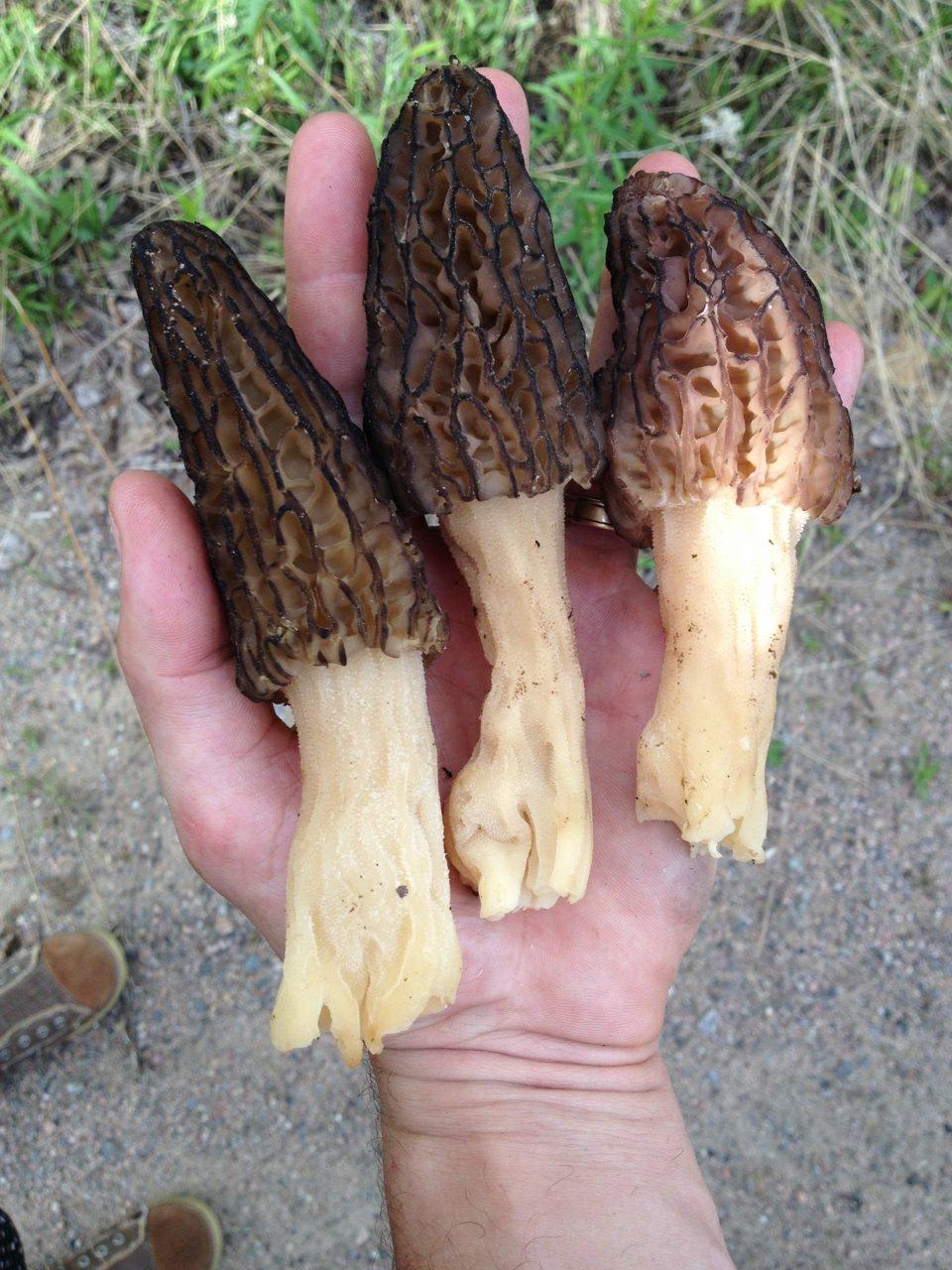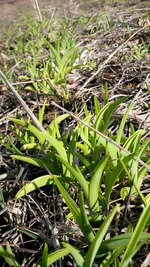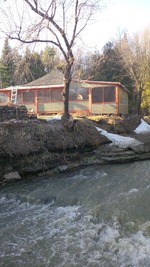Entries in foraging (8)
From Wild Booch back to Wild Shrooms
My new baby – ‘Wild Booch’ - Kombucha Sauvage
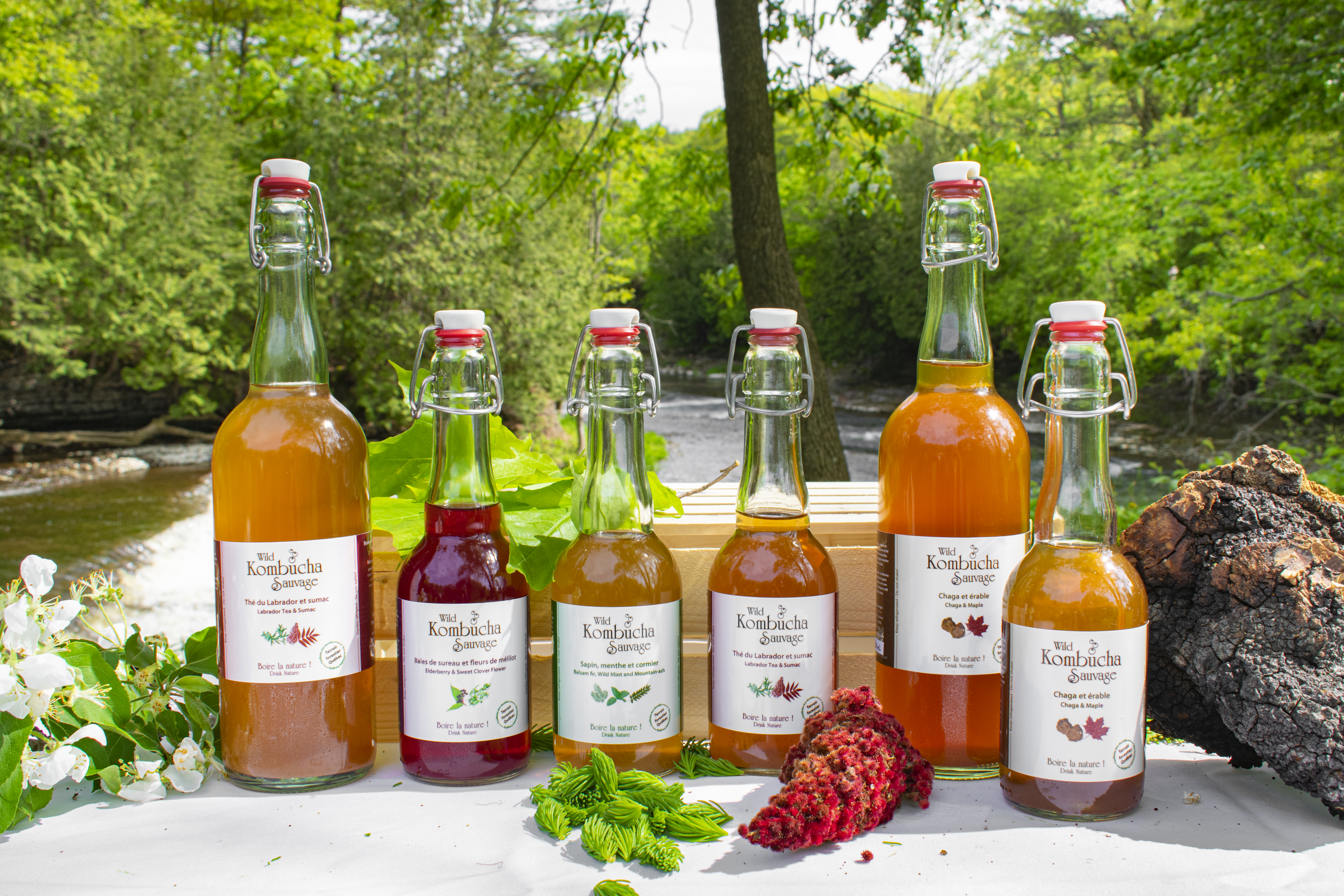
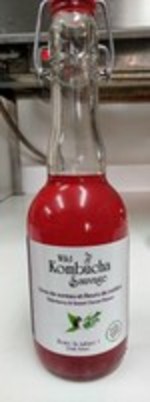 My sexy labels are thanks to Yves (Menu&Cie)
My sexy labels are thanks to Yves (Menu&Cie)
More than a year into this adventure now!
A curiosity turned hobby turned little side business..
It all started with ‘the sodas’ (Soda Sauvage) which I had been working on bringing to market for a couple of years since we began carbonating our maple sap in spring 2016 for fun. François liked it plain, but I wanted flavour! I got to playing around and finally called on Ryk, a soda enthusiast, who coached and lent me equipment for my first bottling. With some further research, trials and a few explosions later, I invested in the basics and got it down. Once my sumac maple sparkling water was set and adopted, it spawned a line of ‘sodas’ featuring clean and subtle flavours from the forest.
Then I caught the fermentation bug after taking a class for professionals with Sebastien Bureau (Mannanova), and began fermenting everything in sight. Scary looking (and smelling?!) experiments were bubbling all over the place between the restaurant and our house kitchen counter and cupboards, François found it frightful - until he was sold. Kombucha became a daily libation for both of us, as well as an amusing project for me – an open template for exploration.. As I have been cooking with all these local wild plants and mushrooms for so many years, it was only natural that François’ foraged treasures would end up in our glass as well! The Kombucha came to overshadow the sodas only because it happened to be trendy and more punchy, more market friendly in the moment.
(In case you’re not familiar with Kombucha, it is a naturally sparkling beverage made from fermented sweet tea that is refreshingly sour, and supposedly super good for you and your gut.) Look it up!
I just think it’s delicious, when well made.. Besides the composition of your mother (SCOBY), and kind of tea, ingredients, herbs and spices you use that go into it, not to mention the brewing temperature and method, there are many different styles. At Montreal’s Boochfest recently at Jarry Park, I tasted everything from sweet, commercial, ultra filtered carbonated ‘phony’ Kombucha to super pure, bland tonic, as well as super dry, overly aromatic concoctions and everything in between. Every aroma under the sun and a wide range of effervescence, on offer from big international companies to hyper-local artisans, all with a unique booch. And from observing customers, it became obvious that everyone seems to appreciate something different too.
Personally I favour a fermented product (so acidic) with minimum but some residual sugar to balance, with a real tasting flavour that is not overpowering. I find that almost every beverage on the market tastes artificial even if they claim to use ‘natural’ flavour; my pet peeve! Although there might be slightly more authenticity in the Kombucha world than with soft drinks or ‘waters’, marketing remains omnipresent and just as misleading as it goes mainstream, the bigger brands already in supermarkets..
I love my bubbles, but I stop them short a bit to have stability in the fridge since I don’t extreme filter out all the good stuff. At home, I often allow for a longer 2nd fermentation and even leave the fruit/herbs in, but not a good idea for business.
My four flavours offer up each a different personality: The Chaga-Maple is Soft and Easy, intriguing for the medicinal mushroom factor; Labrador Tea-Sumac is sharp, astringent and refreshing, my favourite but apparently the least so with customers beyond Booch old timers.
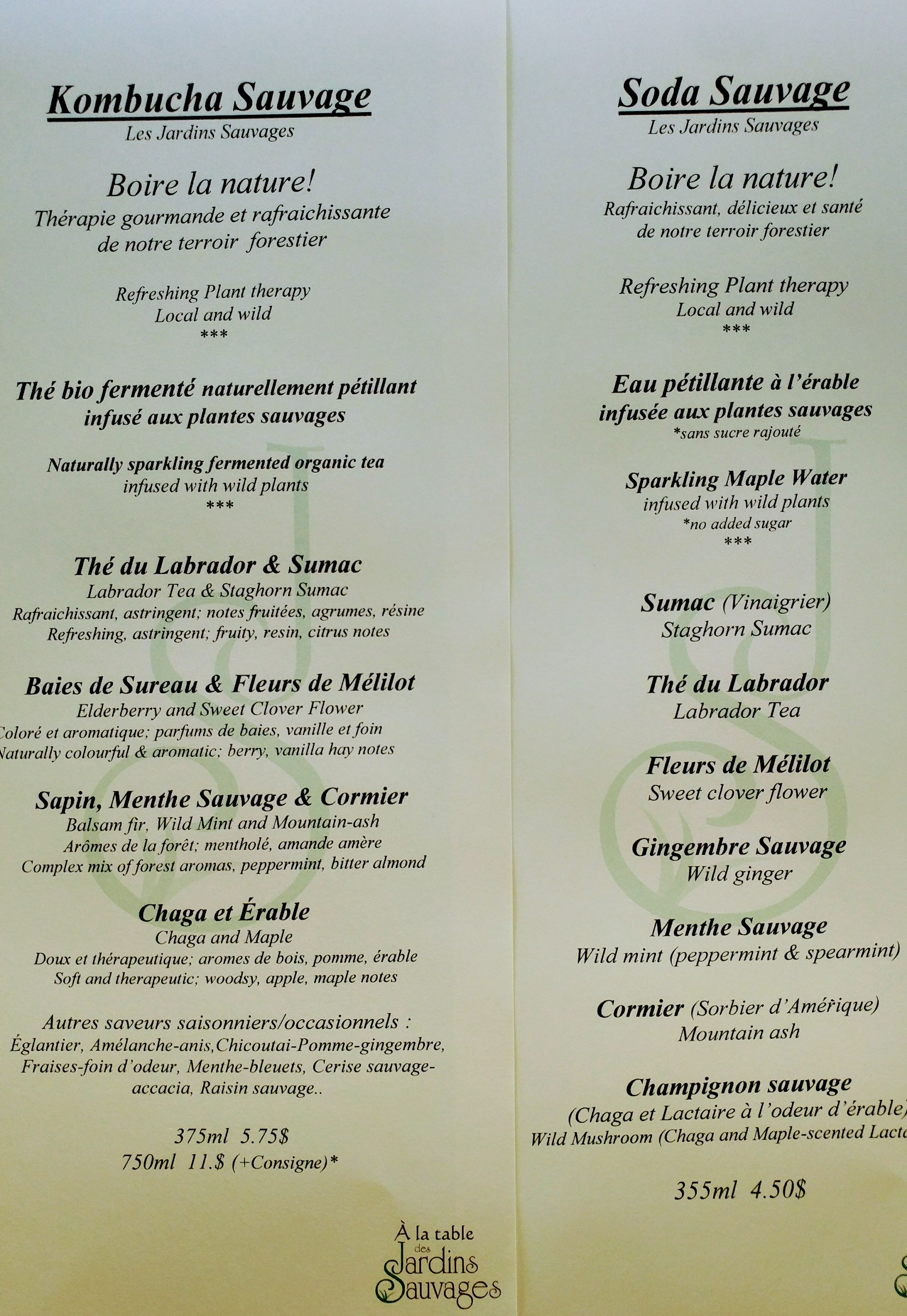
The crowd favourite seemed to alternate by the week at the market, but now has settled on the Balsam Fir, Wild Mint and Mountain Ash. It is the most complex, like a walk through the forest. ‘The chicks’ seem to like the Elderberry-Sweet Clover Flower with its pretty colour and wild vanilla-like grassy notes. We also have many seasonal flavours that we serve by the glass (Kombucha du Jour) at the market like Strawberry-Sweetgrass, Black Raspberry-Anise, Wild Mint-Wild Blueberry, Cloudberry-Apple-Ginger, etc.. http://jardinssauvages.com/index2.php?nom=Kombucha_Soda
Good stuff.
It is not hard to make at home for your personal consumption, if you’ve got some SCOBY *(Mother) and are on top of it. (*A symbiosis of good bacteria and yeasts that turn the sugar /alcohol into acetic acid, among other organic acids)
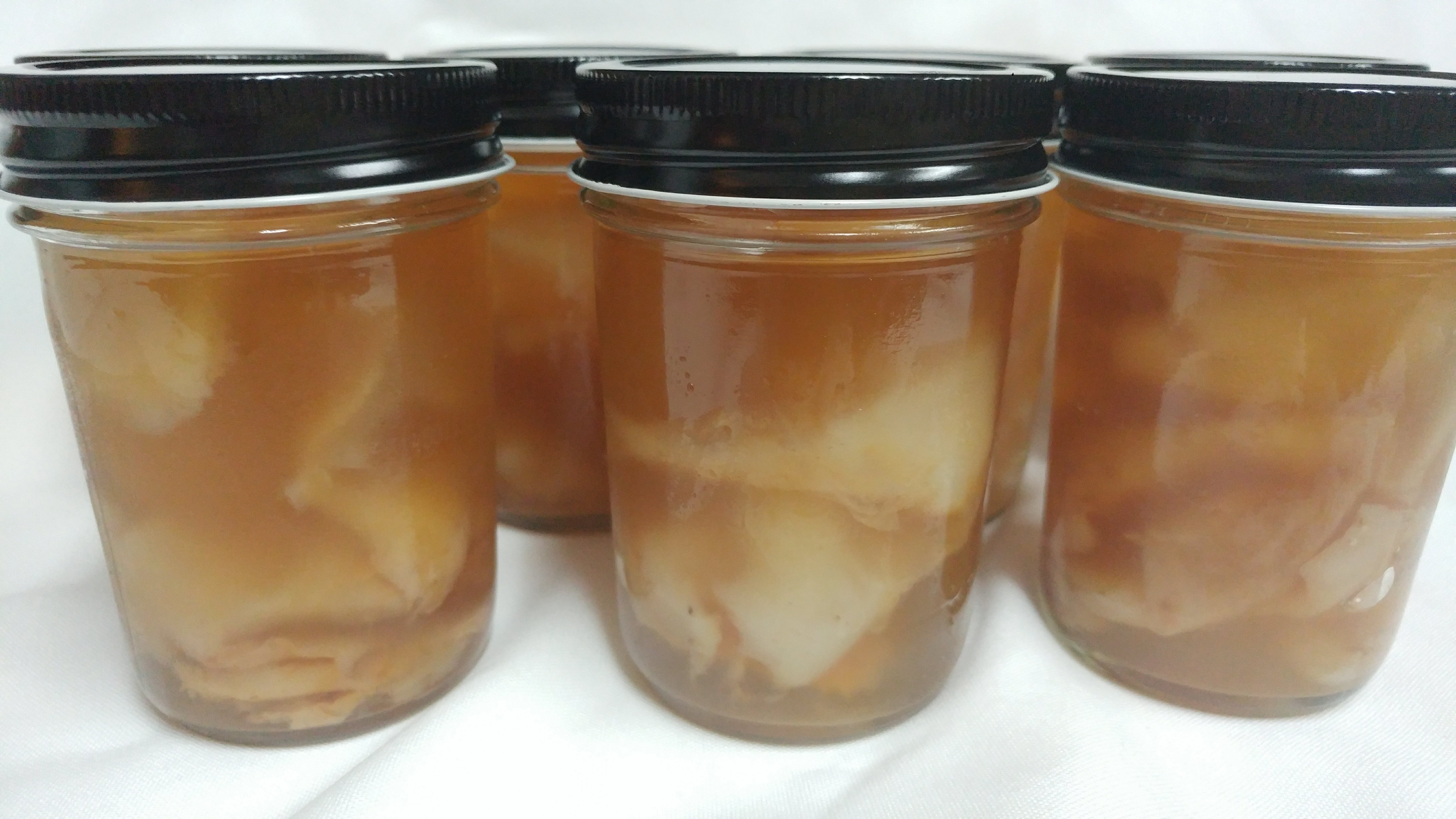
Of course, as I soon discovered, brewing booch at home is one thing, doing it on a larger scale and commercially is whole different game. Achieving a regular, consistent and stable product while remaining artisanal, favouring a top-quality and healthy alive product is a challenge. I learnt a lot in the past year growing slowly, organically, tinkering with all the parameters, doing everything on my own from the recipes to the heavy lifting, methodology, logistical troubleshooting, adjusting variables, tweaking... Alongside my reliable refractometer, I have two Ph-o-meters, but my tongue is the best. All to say, I’m humbly quite pleased with my progress and my line.
As I’m rolling in hundreds of liters and not thousands or hundreds of thousands, my operation is still way small relative to the commercial booch, and we are not distributed - only sold at our store (Jean Talon Market, Mtl), our country table in St-Roch de l’Achigan and on order, for a select few restaurants with a local menu/beverage program, like the Monkland Tavern in NDG ..
At a crossroads, I’m unsure what the next step should be, as I’m maxed out with my current set-up. I could take on a couple of clients, that's it. My plan. We’ll see what the future holds for my Kombucha Sauvage.. I am taking a commercial class on big-scale brewing to enlighten me before further investment.
Who’s kidding who, I am a chef first and quite like it that way. I kind of want to keep up this beat, with my brewing as a sideline, but I can’t help but be excited about the possibilities. But it’s not like I can go BIG anyhow; it must remain artisanal as it is made with REAL, WILD, SUSTAINABLY hand harvested plants and berries, ie. Can not be mass produced. Which is what makes it so special – delicious and therapeutic! Not to mention expensive.. That's why I think it's meant to be just for this scale and a handful of clients with the right clientele - who are ready to pay for something special, like a glass of wine.. A suivre!
One thing for sure, for now, I need to focus on the wild mushrooms and the rest of our business as it is fall, our busiest season. Already!
It’s been a beautiful, yet very dry summer, and so a slow start to the mushroom season; we’re like a month behind, yikes!
Normally by now, I’m several hundreds of pounds into my putting up, not twenty (out of an average of 2 tons/year on average!). Besides some chanterelles and Lobster, a smattering of this and that: a few boletes and milkcaps, not much going on. No puffballs, porcini or hen of the woods to speak of, the stars of late summer/fall.
However, with the recent rainfall, nice days and cool nights, it just might explode. Fingers crossed! A few inspiring photos from last year on our facebook page and this year's menu
https://www.facebook.com/JardinsSauvages17/
The reservations are coming in for our annual mushroom fest, so it will be a mad dash as usual, weehoo.. http://soupnancy.squarespace.com/wild-mushroom-event-october/
Always a tad stressful, yes, but I do love this dance with nature. And everything about the seasons.. How delicious is life now? Not just talking wild things here - the peaches, the corn etc! Yum. It's hard to not want to celebrate these gorgeous days, the glorious harvest season, and all that we are so lucky to have..
Foremost, here’s to Mother Nature, our dance partner throughout the seasons, and the marvelous bounty she offers up for our food and drink, not to mention in sights and sounds; the moon, the cricket/birdsong and the whole shebang.
Cheers!
Happy Mushroom season to us! Let the season of the dirty fingernails begin..
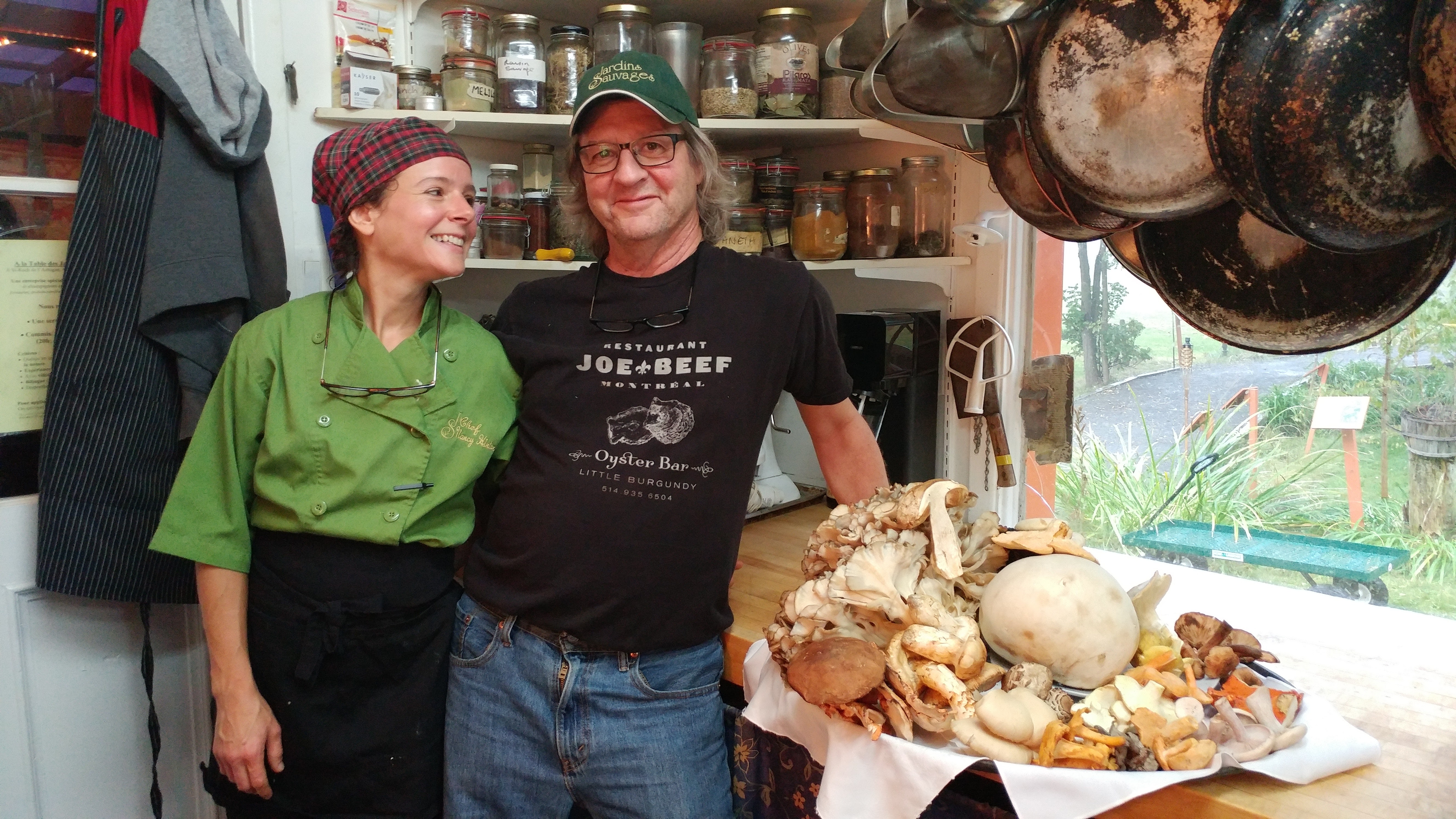
Wild Kombucha Sauvage
Kombucha Sauvage
Boire la nature
Wild Kombucha Drink Nature
Thérapie Gourmande et Rafraichissante de notre terroir forestier
Refreshing Plant Therapy, Local & Wild
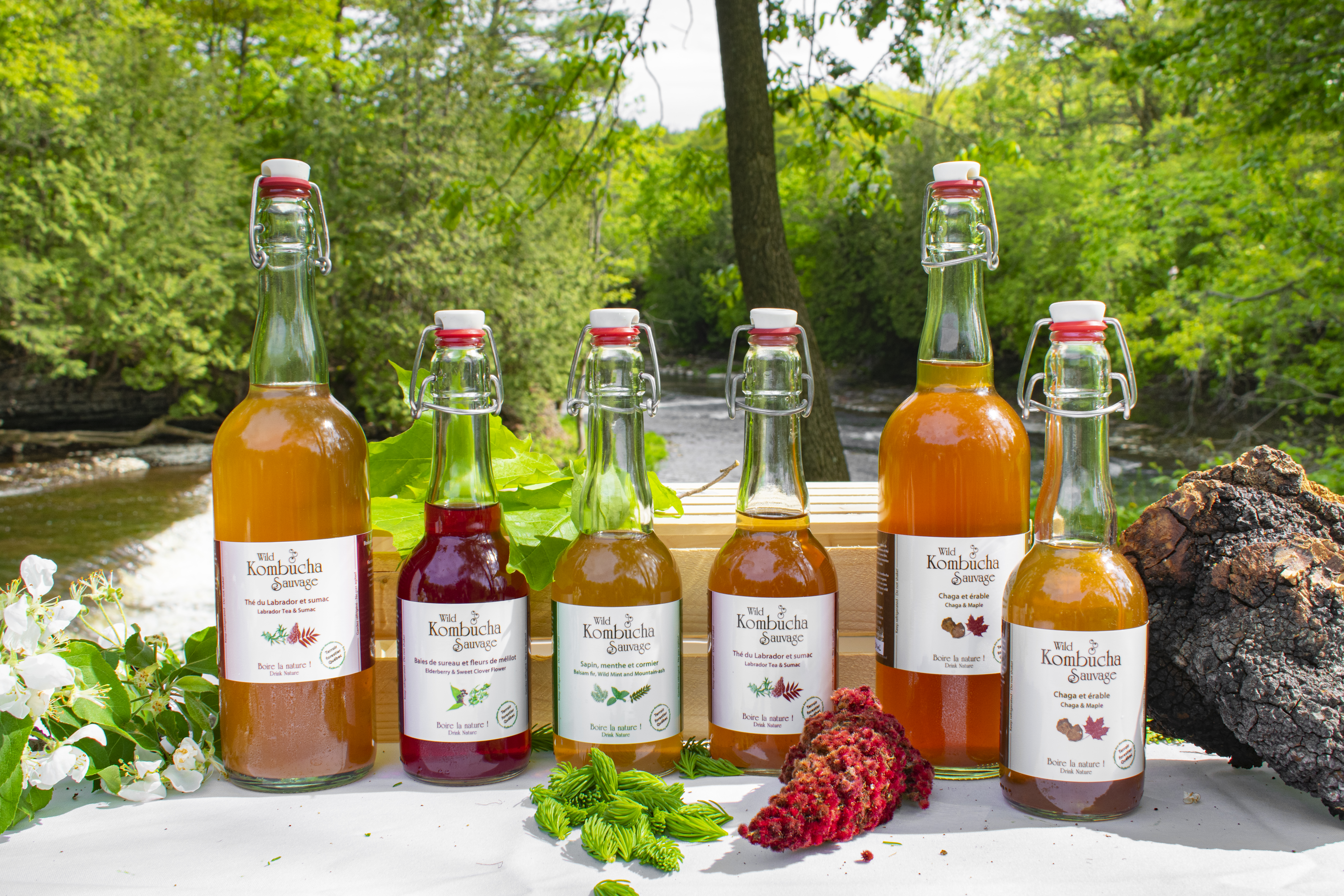
Thé du Labrador-Sumac ; Baies de sureau & Fleurs de mélilot
Sapin, Menthe et Cormier ; Chaga-Érable
+Saveurs saisonnières : Fraise-Foin d’odeur ; Pomme-chicoutai ;
Framboise noir-Anise ; Menthe- Bleuets sauvages..
Disponible à notre kiosque au Marché Jean Talon à l’unité (verre/375ml/750ml) ou sur commande à la caisse/keg
info@jardinssauvages.com ; 450-588-5125
http://jardinssauvages.com/index2.php?nom=Kombucha_Soda
Les Jardins Sauvages, Gastronomie Forestière depuis 1986
Spring meets Summer, Foraging issues and guidelines
Spring meets Summer, finally!
Although it’s still technically spring, it’s starting to feel a lot like summer. A deep, lush green abounds, a symphony of birds chirping, and yup, the mosquitoes are out in full force.
Our spring rush of harvesting shoots and fiddleheads is over. It’s always a mad dash to seize the short window and make the most of it. With a slow, cool spring, the greens were at their best - mild and crisp, delicious.
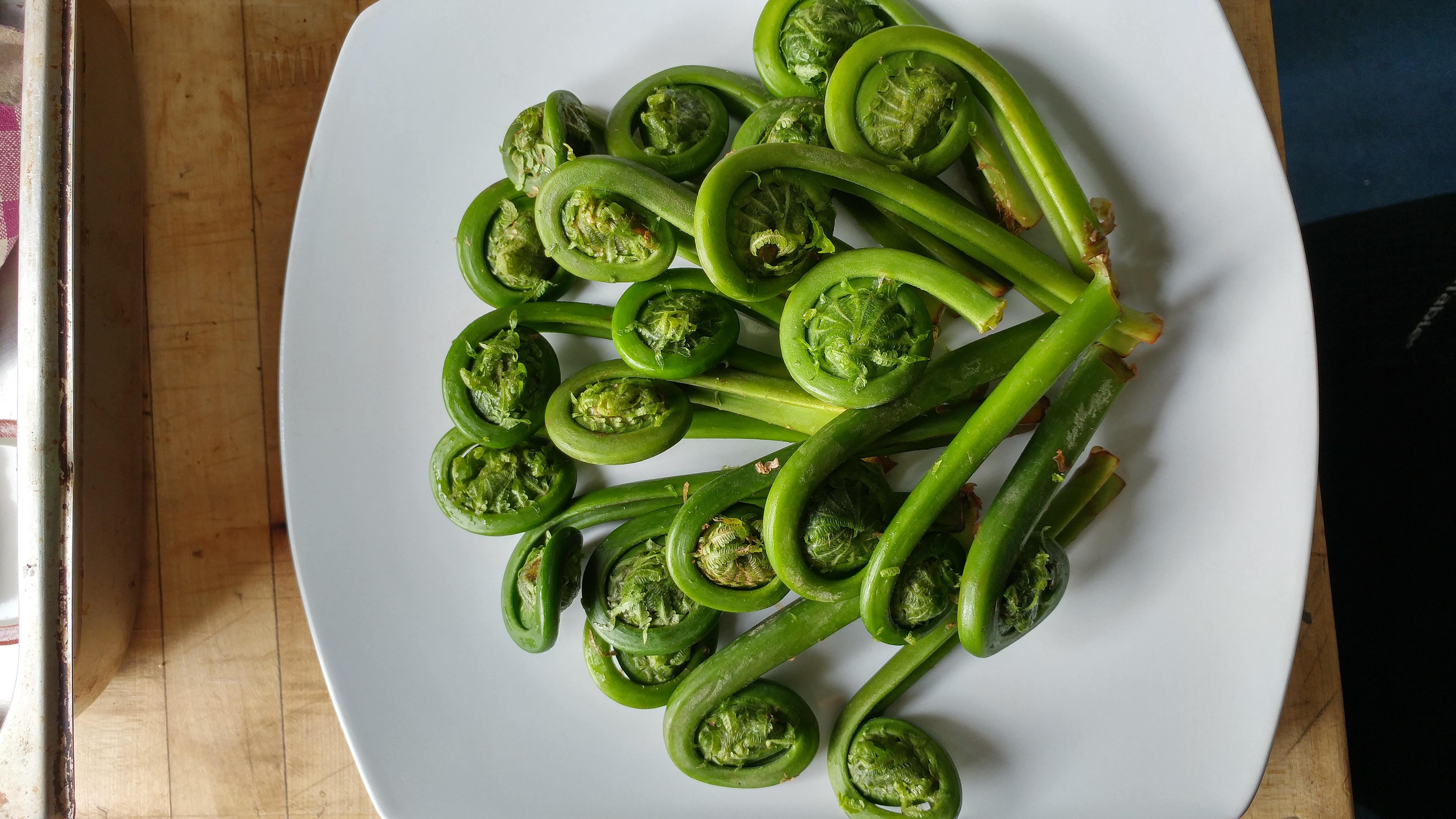 François' 'shade' fiddleheads
François' 'shade' fiddleheads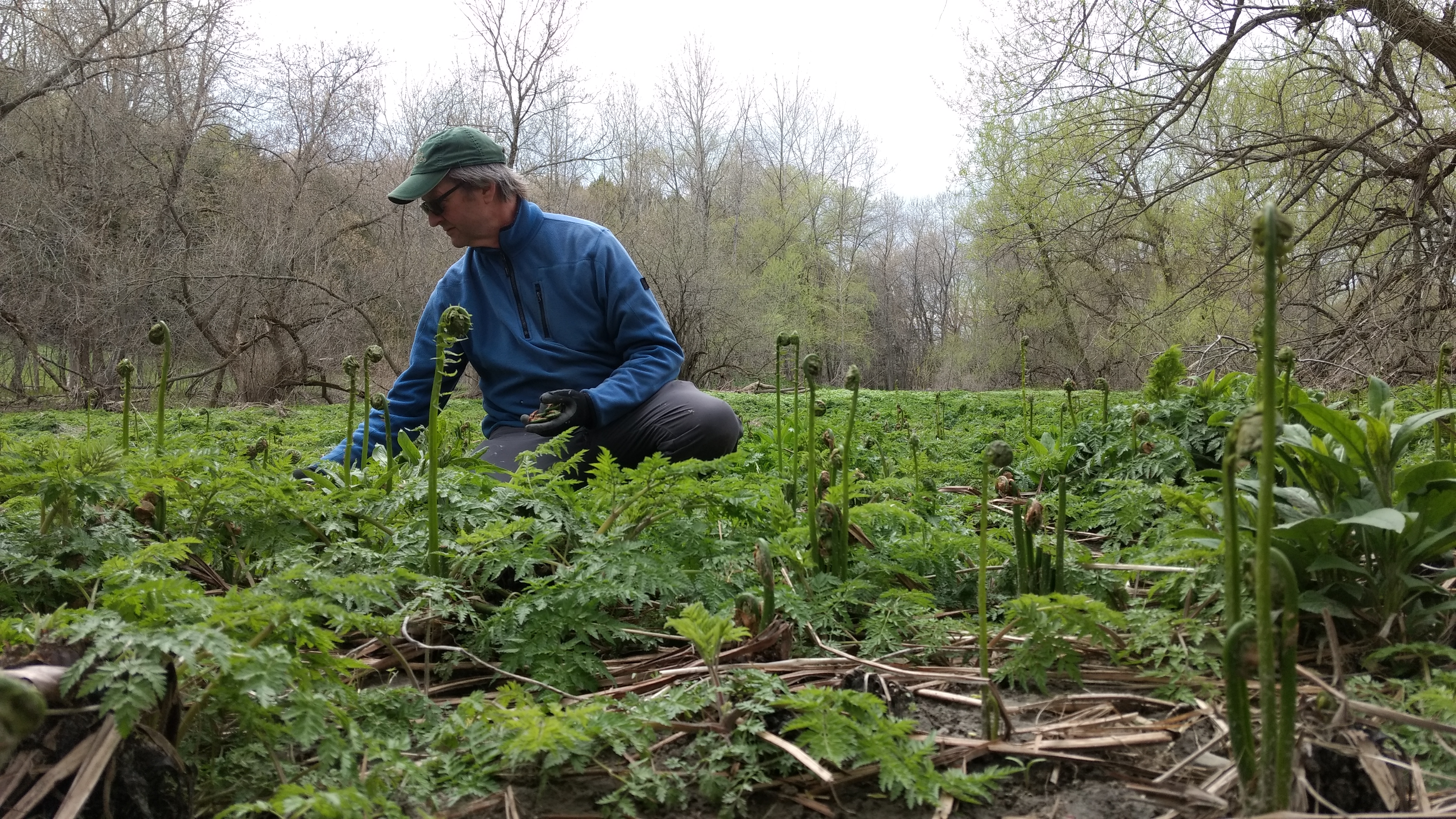
 erythrone/trout lily
erythrone/trout lily
Now, the early season stars like Trout lily, Dandelion, Spring Beauty and Linden have gone, as Stonecrop (live-forever), Daisy and Violet take their place. There is stinging nettle, garlic mustard, sheppard’s purse, wild chives and such.. as the buds appear, the edible flowers start to bloom and first marine greens pop.
It was a great morel season.
I couldn’t help but notice how many people were out there foraging and posting pictures of wild edibles this spring. It is clear that this is a trend that is only growing.
Which is great and NOT.
It’s natural that once awakened to the delights of the forest that passionate eaters and cooks want to get out there themselves. I remember my beginnings at L’Eau à la Bouche with Anne Desjardins where I met François the pioneer of foragers, how thrilling it was to discover these new ingredients. I was lucky to team up and build on his experience, taking the wild thing a step further than the chefs he'd worked with before in the Jardins Sauvages kitchen. But being leaders in largely uncharted territory meant that we had to figure a lot out on our own. Just that a certain plant is edible and best used a certain way is taken for granted now, while many years of research, tests and samples given away lie behind. Not to mention the miles walked and free labour on François' part going back 30 years. Today, it seems that every other menu resembles one of mine from 10 or 15 yrs ago, with game, wild greens & wild flavours everywhere, back when I was the only one with sweet clover or wild mushrooms in my desserts, ha. I knew we were onto something, but who knew it would ‘mushroom’ so.
For sure foraging is awesome in so many ways; it doesn’t get much more terroir, fresh and local than that. But the thing about foraging, is that it’s trickier than it appears! It is not as easy as walking through the woods and filling your basket, it is not 'free'. You need land, and knowledge, a due respect for nature and nuance, lots of time and patience, before actually putting in the hours and doing the work. Finding your spots, being there at the right time, getting down and dirty on your hands and knees with the mosquitoes. It takes more than a day or a season to learn the basics, plenty of books and time spent in the woods. Way more than a google search or utube video, say. People these days want to go too fast. It’s not that I want to discourage eager enthusiasts... But Please! I just wish everyone would be more mindful and cautious. It’s for the plants, the future and one's own sake, not only sustainablility and safety, for deliciousness too.
Foraging primer: Bottom line, Don’t touch unless you know what you’re doing..
Which means How, When and Where.
First of all, know that what you’re picking is indeed edible (there are many look alikes). Ensure that it’s a healthy population. It depends on the microclimate and age of plant population. You need to know the cycle of the plant/how hardy it is before knowing how much you can take. That’s why being in the same spots, seeing the impact of your harvest each year is so important.
Don’t rip out roots (in general). Prune.
If you pick, don’t let it show, as in you’re leaving way more than you take, little trace. Unless you are weeding your garden or in a site with an invasive plant you know well.
Be careful/don’t pick species that are slow to reproduce or endangered: Wild garlic, Wild ginger, Crinkleroot, Milkweed..
And some need to be mature enough, and then just trimmed - like sea asparagus (salicorne, samphire), otherwise you might kill the plant. This is an issue now when it is still several weeks too early to pick salicorne anywhere in Quebec. Yet, I see it on menus.
The ‘weeds’ you can worry less about, Go!: Lamb’s quarters, Nettle, Garlic Mustard, Sheppard’s purse, Purselane, Amaranthe..
And then in the kitchen, they need to be washed, and cooked properly! Some need to be cooked throughout: For instance: Fiddleheads, Milkweed, and most wild mushrooms. Wash well and boil 5min+. Less touchy veg like beach peas, goat's beard, and leafy greens like nettle might only require 1-2min. For mushrooms, a braise is better than a sauté, count 5-20min. Some greens are better raw, but most are better cooked even if slightly. All are super healthy ingredients, but can be toxic, you can’t just wing it. I’ve seen sprouts of toxic plants decorating plates in Montreal.
Don’t give wild plants a bad name by serving anything up because it sounds cool, as little do you know it might be of sketchy quality, often like those on the black market or picked without experience.. For example, dandelion is only good if picked young (before flower) in the morning; most greens like live-forever only in shady, humid conditions; garlic mustard is only yummy young/early season and same, bitter in dry conditions. Same with beech chickweed. Etc. Where, when and how was it picked/stored etc.. is key to whether it will be yummy and not give anyone a belly-ache.
With many wild plants and aromatics (herbs/spices), it’s a question of dosage.. As with nutmeg, basil or rosemary, all of which can kill you if you eat too much. The difference between delicious, medicinal and toxic is in the dose. Normally nature is well made, as in you won’t use anything potent in huge quantities - the difference between a vegetable and an herb, a stock or a sauce. For example, be careful with mélilot/sweet clover flower, sweet grass, conifers - less than .1%. . Oxalis (Lady’s sorrel), like kale and rhubarb leaves contains oxalic acid, which is hard on the kidneys. And so on.
(See more picking tips and photos/links below..)
Whether picking or not, Chefs using wild ingredients need to be responsible for their source or purchases! (See Black Market blurb below) And you can participate. There is a conference on the commerce of PFNL (wild edibles) and the development of guidelines, with chefs and journalists invited (June 14th in Quebec City), the first public meeting of the type, there will be more. It’s about developing the industry further, but in a structured and sustainable way. See below.
Rules and Regulations – they are coming, but it’s complicated
This explosion of amateur foragers and start-ups might be a plus for the economy but problematic for sustainability of the resource and market, quality and safety. Making some sort of regulation has become necessary. Which is what groups of people in the industry and levels of government are currently working on but it’s incredibly complex. Between the interests to develop the forest beyond lumber, putting people to work in the regions, sharing our heritage while balancing what is possible with respect to nature and the realities of the market, labour, what is doable and fair when it comes to enforcement... Quotas, permits?
It’s a big pain in the ass actually. We have no choice but to be implicated, because we care and have expertise to bring to the table, and obviously, it will affect us directly. Trust me, we would rather not have to spend so much time on all this debate and data for regulation because although we believe in it, I can humbly say it shouldn’t even apply to us. Because of all the careless people who ravage or innocently don’t know what they’re doing, we might be banned from picking and exploiting edibles we have plenty of on private property, picking sustainably in the same spots every year (for 30 yrs). Nonsense. No one even knew about most of these wild edibles until François put them on menus by introducing them to chefs.
Or like with ramps. We have a healthy population that we could easily sustainably put it on our menu from our back yard, but it’s illegal. If I chop up a few leaves as a soup garnish for 10 clients there is an inspector at my door. Meanwhile, chefs all over Montreal who do hundreds/thousands more covers have ramps on their menu, from where? No inspectors? So it should be illegal, but what difference does it make? Ideally, it should be legal but regulated.
Black Market Everyone likes a good price, be it at the market or from a picker coming to a chef’s door. This year (and last) at Marché Jean Talon, there was so much black market dumping for fiddleheads, that we had to sell at a loss to discourage them. Because these guys don’t have fridges or a legit business, pay no rent or taxes, no inspectors, zero traceability. Who knows where or how it was picked, stored.. They need to unload so sell at whatever cost, ie dump. Merchants buy and sell. Like with wild mushrooms too. So say this foraging guy decides to continue beyond a day or two, he needs to buy a fridge, register a business, have a clean locale that will be inspected, he will want a website and business cards, maybe an accountant etc. Soon enough he will charge more or bail. Which is what they all do, bail after crashing the market with questionable quality produce, even poisonous mushrooms. So that’s the future if things don’t change, a bunch of n’importe quoi.
Meanwhile, we have for years, sustainably and passionately brought wild edibles to the market (at the restaurant, to chefs and le grand public, in the cooking schools), offering tastings, given out cooking instructions, building the market, teaching. If people want to be able to buy wild edibles from a reputable source, the present scenario is not sustainable.
Marketing vs Truth Everyone has local, something wild or boreale on their menu. But often it’s Bullshit, a few spices and maple syrup while most comes from big suppliers, imported. The morels on the market in March (when every chef wants to put morels on their ‘spring’ menu) came from China. And often, the wild mushrooms and vegetables come from out west, Europe or China, the deer often from Australia; elderflower from an imported extract, sumac imported and very questionable in composition. Wild arugula out of a Costco box is imported monoculture, not the same species as our wild rocket. Just because it sounds wild and local doesn’t mean it is. It sucks to have to question the glossy menu local wild vibe at your hot restaurant. But I’m kind of tired of being the real thing seeing all the BS that doesn’t seem to matter. I’m done with being polite.
Its great that many people want to reconnect with nature, eat locally and explore new flavours. A richesse de notre terroir that naturally should be a part of our culture and traditions, as it largely was before everyone moved to the city and started destroying biodiversity. Now people are waking up to the treasures, but there is less to go around. I know there are many young people opening Boreale restaurants or bars, making gin and cocktail kits, etc with the best intentions, without realizing the issues surrounding the sourcing. Like no idea what 100kg of juniper berries or Labrador tea entails.
Hopefully, we can all move forward with wild edibles for everyone who cares!
Info about the Conference for PFNL guidelines, hosted by the ACPFNL https://www.acpfnl.ca/ Details here: file:///C:/Users/utilisateur/jardins%20sauvages/pfnl/Acpfnl/ACPFNL%20invitation%20AGA%20du%2016-05-2017.pdf To stay informed, the ACPFNL Facebook page: https://www.facebook.com/Acpfnl-Association-pour-la-commercialisation-des-PFNL-178644682180969/
Foraging primer Edible Manhatten http://www.ediblemanhattan.com/departments/d-i-y-departments/forage-or-harvest-a-spring-foraging-primer-for-the-new-forager/
Spring, ramps and fiddleheads http://soupnancy.squarespace.com/blog-journalessays/2015/5/5/officially-spring-2015.html
There are many photos with the plants identified in our albums on our Jardins Sauvages facebook page https://www.facebook.com/JardinsSauvages17/?ref=bookmarks too..
Summer wild edibles http://soupnancy.squarespace.com/blog-journalessays/2011/7/19/snapshots-july-2011-summer-wild-edibles.html
Our old videos:
Spring, trout lily https://www.youtube.com/watch?v=qUMfSfquRpU
Other early summer backyard treasures https://www.youtube.com/watch?v=7Alf1arm478
Wild chives and https://www.youtube.com/watch?v=1kL2ycqvu_Y&t=172smint riverside https://www.youtube.com/watch?v=7Alf1arm478
Stinging nettle https://www.youtube.com/watch?v=1kL2ycqvu_Y&t=172s
Foraging tips and recipes
With the current trendiness of local, seasonal food and notably wild produce, naturally many foodies and chefs are eager to have a go at foraging themselves. After all, it is a part of our heritage living off the land, a rural practical tradition that was slowly largely lost (luckily except for in my partner François’ family).
Wild edibles being our passion and business, (Les Jardins Sauvages a pioneer, thirty years in now), naturally we are delighted that people are curious and open to eating our terroir treasures; however, there is a downside to this trend.. Many among this new set however excited in theory are city dwellers and completely disconnected from nature; they are not afraid enough, or careless , wanting to go too fast without sufficient knowledge, or respect for nature and awareness of sustainability issues.
It is important to have some background information before attempting to forage on your own.
Equally, if you purchase wild food, you want to know that the seller is first of all certified with an official business, knowledgeable and respectful of nature, picking sustainably, mostly on private property if not owned then with permission. Especially restaurant Chefs who are dealing in larger quantities should take responsibility when they put foraged foods on their menu, ensuring that it is from a reliable sustainable source (paid for with bill). The increasing number of hacks and black market is dangerous on all levels not only in terms of sketchy product commonplace, but in terms of sustainability of the resource with no traceability (picked how, where, by who). Not to mention that without the overhead of running a business, these occasional pickers crash the market making it difficult for an experienced business like ours doing it right, working with the government and schools, dealing with inspectors and paying taxes etc. (and who paved the way to boot).. Awaiting regulation, the best we can do is keep doing our thing while educating..
I recently hosted a crew of explorers who were here for a forest cooking competition (Woods Greatest Canadian Explorer) in a survival type series of challenges (airing July 28th) https://www.youtube.com/watch?v=aIvl5CWwZdw . We gave them a crash course in foraging with many of the wild edibles on our property before they had their cook off using wild foods and regular camping gear and dry goods. When customers come to the restaurant for a workshop dinner too, these are the main points we share with them about foraging before they go out identifying and tasting with François.
Bonus below are also a couple of easy recipes that you can dress up or down, meant to be doable while camping.
Foraging Tips
Chef Nancy Hinton, Les Jardins Sauvages
Know what you’re doing!
Ensure proper identification. Don’t rely on only one book (especially with wild mushrooms).
Ensure proper picking, both for taste and Mother Nature. There is a specific way for each wild edible (how, when and where).
Some greens are hardy, growing like weeds in the right environment (like lambs quarters, garlic mustard..) while others have a slow reproduction cycle so can easily be endangered if over-harvested (like ramps/wild garlic, wild ginger, crinkleroot). Don’t touch unless you know the life cycle of the plant and that it is in a healthy population.
In general, don’t rip out roots. Prune tips or leaves from mature plants, leaving buds; leave young baby sprouts alone.
Leave more than you take.
Besides for sustainability, there is also a proper way to forage for deliciousness and digestibility. Some plants are best picked in the morning (say dandelion), others at noon (say some flowers and goats beard).. Some plants are tasty when growing in a moist humid shady wooded area, while bitter, even inedible in a dry sunny season or spot, as with live-forever, wild rocket and mustard, sea chickweed..
Keep in mind that many wild edibles need to be cooked, for example: fiddleheads, milkweed, most wild mushrooms. It is a good idea to wash your harvest. When cooking, follow your palette: If it is pungent, use sparingly like an herb; if it is mild, then use as a salad green or vegetable.
Don’t be in a rush. Be cautious, not stupid.
Books and google searches might be a fine help, but there is no shortcut for experience.. Time in the Woods is Key! The best way to learn about foraging is to get to know your property or a patch of land/woods nearby that you can visit often, observing patterns, trees and what plants/mushrooms grow where every year, including the impact of your harvest (if you have permission to pick.) Start with a few plants and mushrooms, get to know them well and slowly widen your scope every year.
Some wild greens/vegetables to explore without fear: Live-forever, trout lily, violet leaf, day lily, fiddleheads, lamb’s quarters, amaranth, garlic mustard, wood sorrel, sheppard’s purse, wild mustard leaf, wild celery/lovage.. Always keeping an eye out for familiar wild berries, wild mint and chives..
Some wild mushrooms to start with:
Boletes (A family of hundreds including Porcini with the sponge under the cap) – While not all are of interest, they are not dangerous.
Lobster Mushroom – characteristic red colour and shape
Chanterelles – there is only one ‘look alike’ and easy enough to differentiate
Oyster/Shelf mushrooms on maple trees. Most are good when young, avoid really old rotten trees.
Be afraid of very pretty picture perfect mushrooms – often the deadliest!
Fish baked with crinkleroot, tomato and wild herbs
Chef Nancy Hinton, Les Jardins Sauvages
4 portions
Ingredients:
500g fresh fish fllets (or 1x 2lb whole fish, gutted)
45ml Butter and/or olive oil
1 c (250ml) shallots or onion, sliced thin
60ml (1/4c) sliced wild garlic (or 30ml minced garlic)
15ml (heaping Tbsp) steak spice
125ml (1/2c) white wine
30ml (1 Tbsp) crinkleroot (or horseradish)
375ml (1 1/2c) diced tomato (1 can)
250ml (1 c) heavy cream
1.5L (6 c) wild greens such as lambs quarters, sheppard’s purse/wild rocket sprouts, mustard leaf, amaranth..) or spinach/greens of choice
60ml (1/4 c) wild herbs such as wood sorrel, garlic mustard leaf, lovage, ramp leaf, chives, angelica, yarrow.. (or dill, tarragon, basil/ herbs of choice)
To taste salt, pepper
To taste hot sauce or chili
Method:
The fish can be cooked whole and served off the bone too. It all depends on your camping set up and mood.
Sprinkle the fish with steak spice.
Heat large pan or pot on burner or fire, sweat onions in butter/oil a few minutes, add garlic and crinkleroot, then white wine, tomatoes and cream. Place fish in sauce and top with wild greens and herbs, season to taste. Cover and bake or cook gently for 15-20min or until just starting to pull apart. A whole fish will take twice as long.
For the simplest method: All the ingredients can be put in a covered pot on the fire or in an aluminum foil packet (en papillote)..
Wild Mushroom Rice bowl
Chef Nancy Hinton, Les Jardins Sauvages
4 portions
Ingredients
225g wild mushrooms (such as chanterelles, hedgehogs, lobster mushroom, young king or yellow boletes, black trumpets..), cleaned and sliced
45ml grapeseed or olive oil
15ml (1 Tbsp) butter
1/2c (125ml) chopped shallots or onion
30ml (2 Tbsp) wild garlic (or half as much garlic), sliced thin
10ml (2 tsp) wild ginger, minced
250ml (1c) long grain rice like basmati
125ml (1/2c) white wine
30ml (1 Tbsp) dried mushroom powder
375ml (1 3/4c) water or broth
To taste Spices (ex. clove, bay leaf, pinch thyme or curry powder..)
To taste salt and pepper
1L (4c) Mix of wild greens and herbs such as lambs quarters, dandelion, wild rocket, ramp leaves, day lily shoots, daisy, sorrel, mint.. (or say spinach, watercress and basil, coriander, mint..)
30ml (2 Tbsp) Olive oil
Optional splash sesame oil
100ml pickled mushrooms, fiddleheads, kimchi or pickle of choice
To taste Chilli/hot sauce
Method:
Sauté mushrooms in a hot pan with oil. Once they start to colour, add the butter and onions and turn down the heat to medium, cook a few minutes and add the rice, garlic and ginger, stir to coat the rice. Add the mushroom powder and wine, reduce slightly. Add the water/broth, season with salt, pepper and spices of choice. Cover and cook over low heat for 15-20 minutes, until rice has absorbed liquid and looks almost done. Remove from heat and let sit 5-10 minutes.
Meanwhile, toss greens and herbs with a good oil, salt and pepper.
Serve rice topped with salad and pickle.
Add a fried egg, tofu, cooked sausage, leftover chicken/steak or protein of choice for a more substantial meal.
Officially Spring 2015
Spring 2015, a slow start but officially here and going fast now..
Wow, the fervor of spring, ie the beginning of the growing season, feels new and exciting each year but if I look back at written words over the years, it’s like groundhog day, and I’m an annual seasonal broken record.. Maybe that’s partly why I don’t blog as religiously anymore.
So I’m streamlining here with main highlights and an updated slideshow of spring edibles (below), most of which are peaking now.. And honestly, it is indeed different and ever as thrilling year after year, I just no longer feel like repeating everything ten years later.
Spring 2013 post with more detail and photos.. (back when I was able to upload photos here)
No Doubt, Spring in St-Roch really is the jackpot season, when there is the most abundance of edibles in our backyard. Highlights are always the wild salad greens which are really good this year; with the cold start, the dandelion isn’t bitter at all for instance, the spring beauty, trout lily and daisy so sweet, the live-forever juicy..
Spring Edibles slideshow Les Jardins Sauvages
Beyond the little curiosities such as apios (wild potato), the day lily shoots and varied sprouts, roots, spruce tips and such, it always comes down to two main topics in spring..
About ramps: I have said it all before, but..
Bottom line: Know where your ramps are coming from, they are slow to reproduce and need to be harvested sustainably, which is why they are illegal in Quebec. Pick on your own property and you won’t be ripping out any roots, picking carefully and moderately. Harvest the leaves at the end of the plant cycle and use in salads or as an herb, make pesto for the freezer. Same story with crinkleroot and wild ginger which also have a slow cycle, and so are on the endangered list - you can’t be ripping out the roots. Pruning a healthy population on your own property is the only way to go, which is what we do. Chefs and diners should be aware, there are a lot of hacks out there wrecking it for the rest of us.
About fiddleheads I have said it all before, but..
Bottom line: Don’t worry, they aren’t toxic (as long as you are sure you have the right fern), you just need to wash and cook them to the core. There is a molecule that is hard to digest, but it is water soluble and denatured by cooking. They grow in swampy areas, so another reason to wash and cook. But they are super nutritious and delicious if fresh and cooked properly. 5 minutes in lots of boiling water is all it takes, then sauté with garlic, butter/olive oil, a squirt of tamari and cider vinegar, salt&pepper. I like a splash of hot sauce too. They are great with bacon, bone marrow and duck confit, sesame and nuts, as well as in curry or stir-fries, or just plain with a meat dish.
Get out there, breathe the spring air eat some greens!
Visit us at the restaurant Our spring menu
And our workshop dinners are every second Sunday from May to July.
Visit us at the Jean Talon market! The walls are down and producers will start showing up as of this week..
Like our Facebook page Les Jardins Sauvages if you want to stay tuned to what is in season and available at the market..
August, Good eats
For a minute in August, I always get sad as many wild plants go to seed (the cycle over), which means fewer tender leaves for picking, but also that the array of beautiful flowers (some tasty too!) dwindles to a measly palette of golden rod, wild parsnip and aster for the tables, some yarrow for medicinal purposes.. You see, beyond cooking the wild edibles, picking wild summer flowers makes me happy – being surounded by the scents and colours, arranging bouquets for the house and restaurant.
Thankfully it’s always around the same time that mushroom season starts kicking so I don’t have much time to wallow. Not that ‘normal’ means anything anymore in terms of nature’s timeline apart from that. You’d think with all the rain and intermittent nice weather, it would be a good mushroom season, but apparently it's not a given yet. Like with many summer plants, marine greens and berries, everything is late. Looks like a good berry season though thanks to the water. The blueberries are amazing; we’re picking the first wild blackberries and sarsaparilla.
As for the shrooms, around here, the early summer boletes (like yellow granulee, pied rouge and glabrescent) are on their way out while the lobsters, lactaires delicieux are showing up. Chanterelles and porcini have been present for a couple of weeks, the Flocons and Black trumpets appearing now. Puffballs and Hedgehogs won’t be far off. Some Chicken mushroom, so Hen of the Woods soon too. Looks like it might be a better fall season, fingers crossed.
Some photos:
Other things that make me happy in August, not just wild:
Ontario peaches and they are good this year. Especially when you have a forager guy that can choose fruit like François. Peaches are best eaten as is, but during the season, inspiring to cook with too. I put some in my berrry chaussons and some compound salads at home (with something salty, think melon proscuito).
Fresh peas and favas, however a bad season for them, but the few sacs we were lucky to get were good, always labour intensive but worth it.
Corn – you need to buy (Denault’s) yellow at Jean Talon Market, so good. Look for Le Roi du Mais.. Corn on the cob, a rite of summer; great in salsas and compound salads, in soup.. A favourite sidedish this summer has been a new potato salad with corn, yellow beans, sweet pepper, sea spinach and our wild herb chimichurri.. Corn is a sure crowd pleaser in soup too: I nowhave a corn and wild mushroom chowder on the menu at the restaurant, a good way to use up all the broth I make from the empty cobs.
Back to the wild: sea spinach of course! My absolute favourite wild green, raw or cooked, especially just wilted with garlic, EVOO and butter or chopped up and added to a salad or pasta/rice dish/omelet... If you've never tasted it, it's just like 'super duper' spinach - more flavour and a touch of salt and pepper built in.. Like with spinach, I prefer the bigger leaves of late season available now and for another week.. Hopefully I won't be sick of it by week's end, the last stretch in my race of putting up for the year, hundreds of pounds, a good chunk for Joe La Croute's popular Popeye bread.
The sea rocket and salicorne are good this year too, if hard to find; the stormy weather and tides having completely transformed the landscape, forcing Francois, Claudie and team to hunt far and wide.
June 2013, the month of plenty
What’s in season? So much! Our menu says it all.. Jardins Sauvages summer menu July
No actually, not even quite – there is only so much you can jam into one five course meal..
Photos: Until I can find the time to fight with my blog, this will have to do:
https://www.facebook.com/media/set/?set=a.403586316349603.80613.248095141898722&type=3
C’est l’abondance! In St-Roch, this is the best time of year for variety of wild edibles – shoots, greens, roots, flowers, vegetables.. And with all the rain we’ve had, everything is green, the wild plants better than ever, gorged with water hence less bitter; things are going fast. As long as there is the occasional sunny, dry spell, this is all good for us. Except that we have to be on our toes; if mother nature is on speed, we have to follow or miss out for the season, not to mention our mission of putting up for the year.
Our mesclun has morphed, officially more summer than spring now with lambs’ quarters, live forever, daisy, lady sorrel, garlic mustard leaf, some crinkleroot leaf still, a variety of petals for colour and zip.. The last of the spring beauty, violets and acacia, rose petals and day lily moving in..
The marine greens are starting to come in from Kamouraska: beach peas, goat’s beard, sea parsley.. It won’t be long before we happily add sea spinach and sea asparagus to the basket.
Thanks to a wet month of June, local mushrooms are showing up early – its still morel season in some parts of Quebec, but here already some choice boletes like the yellow (bolet granule) and orange cap, as well as wine caps.
Milkweed broccoli is out, daisy buds too. We have a few weeks ahead focused on the oh-so-popular (but labour intensive daisy buds). The cattails aren’t far off, another big job with a short window. We peel the young cattails and then harvest the next stage – the pollen, drying and pulverizing it to make a flour/seasoning. For a week, my kitchen is covered in yellow dust and I blow my nose yellow at night. Goes with the territory, like black fingernails in mushroom season.
Let’s just say that cattail season (also elderflower, sweet clover, wild strawberries, the first mushrooms..) is not good timing to take off.. But as it happens early, François will be in ‘le grand nord’ for a week of fishing and prospecting, and I will be in Toronto representing Jardins Sauvages for the Ace Bakery Incubator Awards; hopefully we won’t miss out on too much with everything sprouting so fast..
Amidst it all, I try to occasionally get my coureur des bois and forager for the stars (or as he prefers to be called, Jardinier de foret) on tape. It’s all very on the spot and amateurish, but a fun start.. I promise we will make a point of capturing the moment more often and hopefully get better at it in time, with more English too once I get used to my phone/camera, keeping in mind that following François is never easy. So, anyway, here are the little videos on foraged wild plants we have so far.. (In French, although I usually throw in a word or two of English if I remember to): http://www.youtube.com/my_videos?o=U
Finally, signs of spring
After a rough winter, it feels like spring is late, when in fact, it is right on schedule and 'normal' if that means anything anymore. I'm a winter-lover, but this year, I'm more eager and ready than ever.
Well, there is still snow in the woods and chilly nights, but spring is definitely in the air.. We're not near tripping over morels, but François has picked his first sprouts and is getting ready for the first fiddleheads. Everything is going to start popping in the next couple of weeks.
Trout lily/Erythrone, the first green: here François picks and talks - an impromptu video filmed by an amateur, sorry in advance for the yelling. In French. Francois à l'érythrone
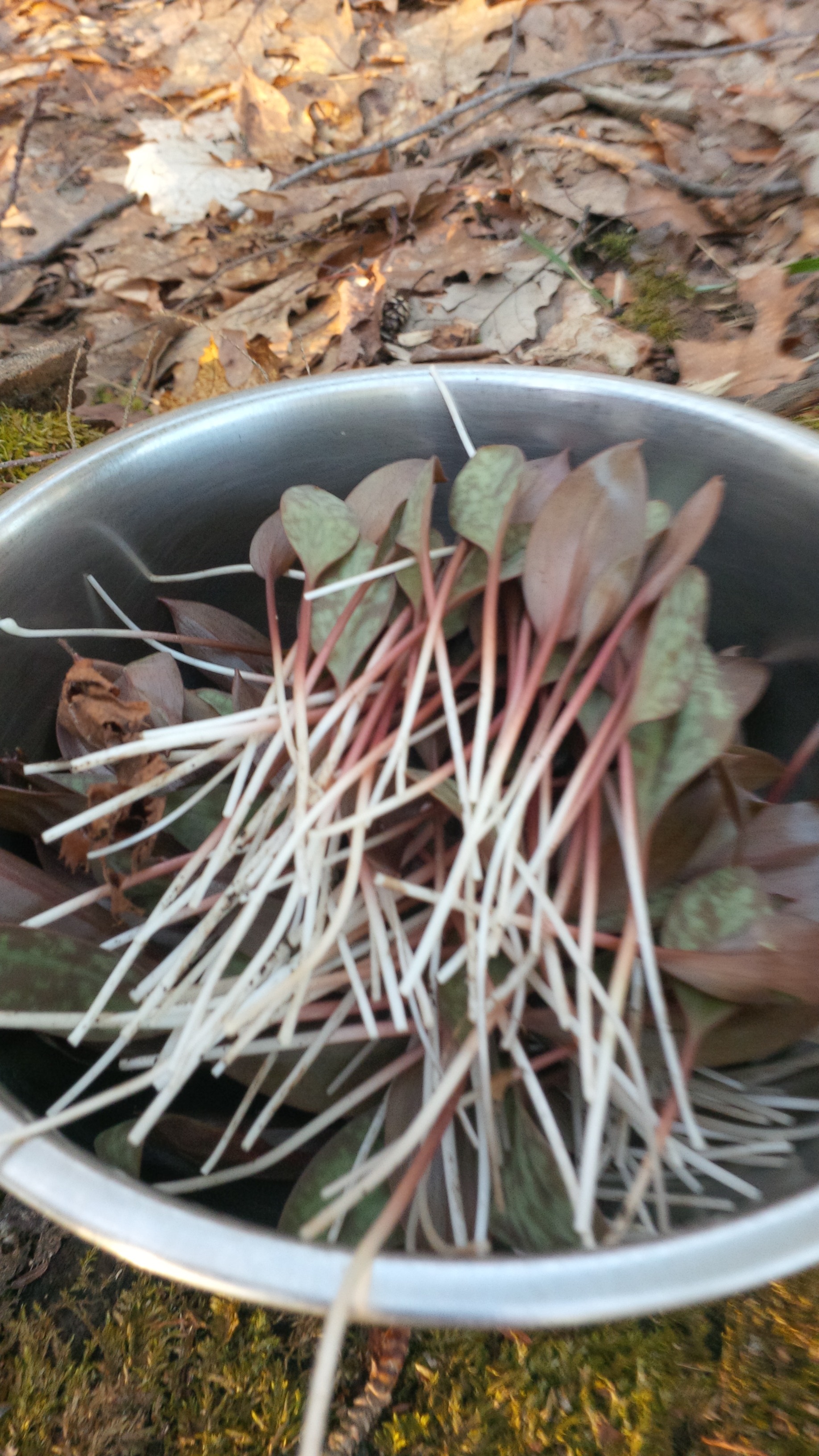
Day lily sprouts
We have a field of these on our property, so we always pick a few to cook up as a spring vegetable – kind of like a leek but a shorter cooking time and milder taste. We’re not sure if we’ll bring some to market or not because the problem is, it seems to inspire people to go picking any other lilies in the city, eating them raw and stomach aches bring inspectors our way even if we have nothing to do with it.
Coltsfoot/Tusselage
This is for my apothecary more than my kitchen, being a pulmonary tonic and good for a cough/sore throat. I use it in my winter cold remedies, tisane and cough syrup. It is the first bloom before dandelion. The spring beauty is starting, nettles are at the baby stage.
It will be the first week end for our spring mesclun at the market, starting with dandelion greens, trout lily and spring beauty, evolving into a more colourful and complex medley, less bitter and sweet as the season evolves.
Although every season feels new, if I look back, I can’t help but think I sound like a broken record, getting excited about the same wild edibles and describing them over and over again eachyear.. So I will keep it short and sweet, but if you’re just tuning in now and want more detail about these spring edibles, here are but a few links to previous posts:
Spring plants from 2012 http://soupnancy.squarespace.com/blog-journalessays/2012/4/14/spring-is-springing.html
Spring plants from 2011 http://soupnancy.squarespace.com/blog-journalessays/2011/5/5/spring-has-finally-sprung.html
And yUpload Filees, its that time of year again - to calm everyone down and reiterate About Fiddleheads.. Dangerous or not, How to cook http://soupnancy.squarespace.com/blog-journalessays/2012/5/14/fiddleheads-for-once-and-for-all.html
When the season peaks, I will make a video - maybe that will get the message across.
Our spring menu at La Table des Jardins Sauvages starts this weekend and the first workshop dinner is on Sunday the 28th at 4pm.

